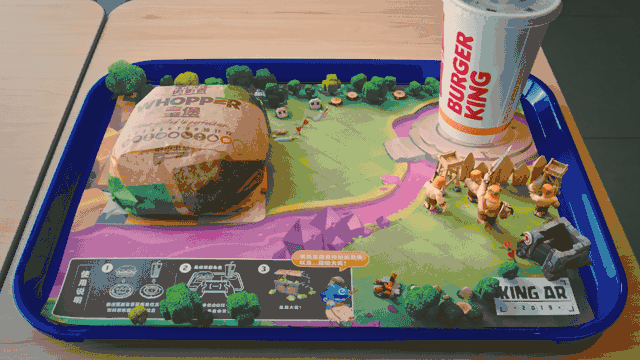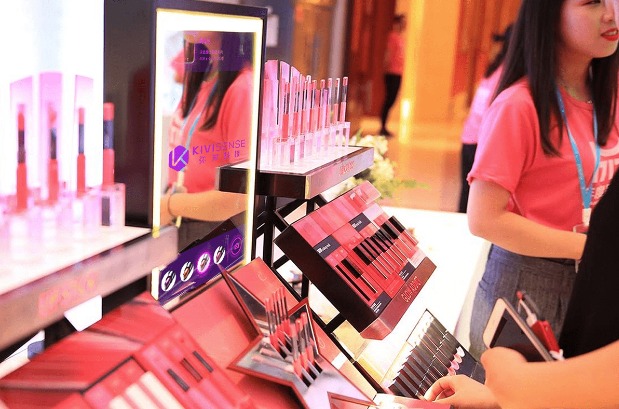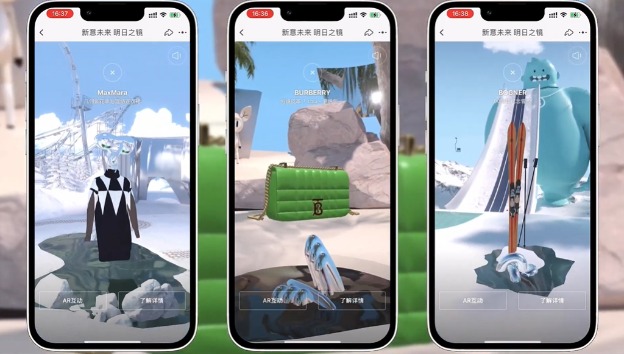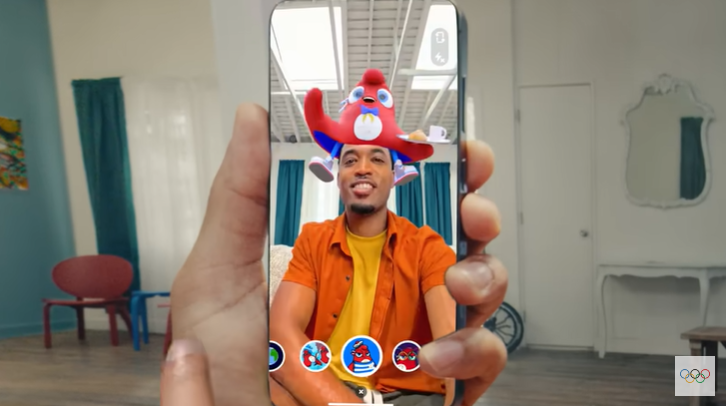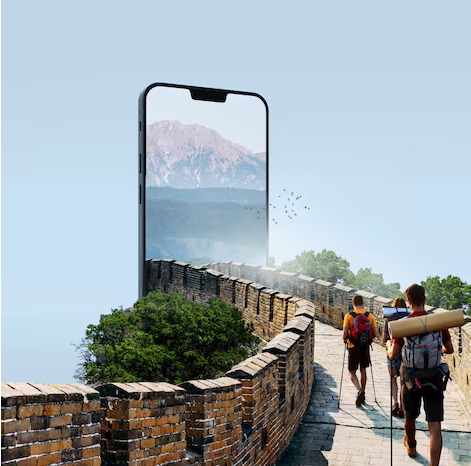Augmented reality in the food and beverage industry is implementing a three-dimensional preview of restaurants through graphics and animations. The customer is becoming experience-centric. The computer-generated digital world and the real world make it a better experience approach. Recipes can pop up with the food packaging by scanning QR codes or some restaurants even show the food-making process and its delivery to the consumer’s table. Some businesses are using augmentation to train waiters and chefs.
The Rise and Evolution of Food AR
Augmentation has evolved the packaging by creating interactive digital experiences. Not only that, but consumers can now move on from static labels to 3D experiences of the menus. For a multisensory experience, augmentation implementation in the food industry is a palatable tech movement that serves food on digital screens before serving it in reality. AR is not limited to recipes and food experiences. From learning knife skills to plating techniques, augmented reality in the food and beverage industry is reflecting advancement.
Applications of AR in the Food and Beverage Industry
AR menus and food visualization
The rapidly advancing technology of augmentation is now enhancing the visualization with three-dimensional content. Consumers can now experience 3D models of food by rotating and viewing from different angles. The detailed view of the processed food visualization helps reduce menu anxiety and enhances cultural understanding. International cuisine gives diners confidence in the chef and restaurant after a preview of what’s to come.
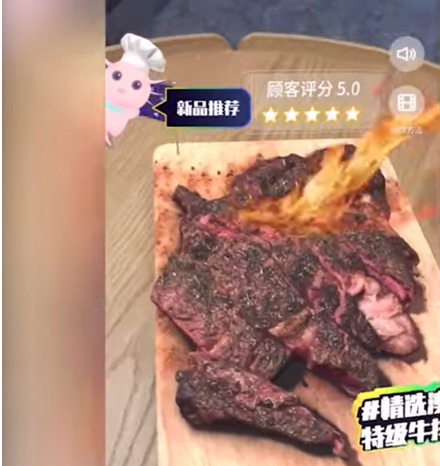
For example, kivisense has introduced a new approach to food preview. The augmented reality menu for steak lets the consumer check the steak production, and ingredients before ordering. Not only does this help in suggesting what texture the diner wants but also brings forward a new approach to trying new things.
Interactive AR packaging
The hot food trend in technology is now interactive AR packaging. Many consumers were taken aback when they saw the advancement of augmentation in packaging through mobile augmentation reality or MAR. Diners can thoughtfully scan codes or download AR apps on their smart devices. Recipes will pop up or the whole process of the food and beverage will help broaden the horizons of how advanced AR is making lives.
For example, in this use case, pizza packaging is done uniquely. Scan the QR code on the packaging box and try a new way of checking ingredients in the food. This AR technological approach has helped food brands offer special packages for consumers who are often eating out.
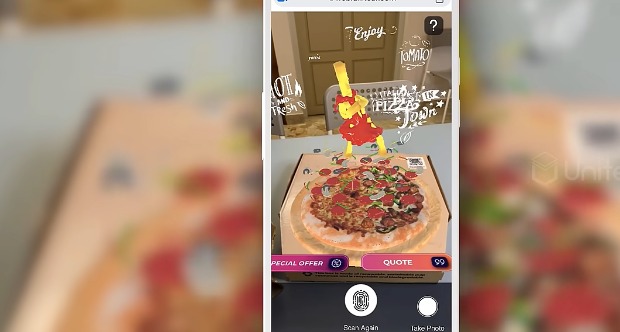
Source: UniteAR
Virtual food preparation and cooking demonstrations
For pre-processed foods, sometimes the instructions don’t go a long way. Something will always mess up in the process, making it hard for the consumer to retry or trust the method. Augmentation is now offering virtual food preparation that will help diners have a full-on digital experience of how the recipe is supposed to go. Also, anyone learning to cook from scratch can have predefined methods with tips and tricks.
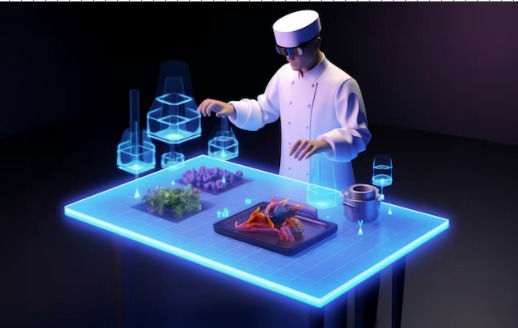
Source: FreePik
AR-enhanced culinary training and education
As said earlier, learning is not physical classes only. Culinary training with educational experience through augmentation is making lives easier. Anyone who wants step-by-step guidance with instructions about ingredients and information about the origins and seasonality of food can step up their game through AR.
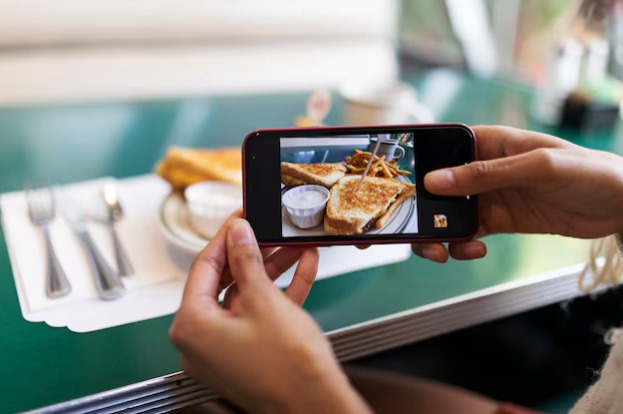
Source: FreePik
Augmented marketing and advertising
Food and beverage companies are taking matters into their own hands and enabling additional layers of AR in the marketing and advertising industry. Consumers want to experience what the companies are offering without investing. Marker-based AR is the best implementation in this regard. The packaging is now becoming more fun through easy access to recipes, nutritional information, and relevant but fun facts. The social media integration by some food and beverage companies allows access to filters and sharing experiences with enhanced storytelling.
For example, KFC has enhanced the preview of their restaurant through augmented reality. Now diners can check out what the restaurant has to offer with the touch of a screen. Colorful technological magic sparkled with some offers for daily consumers is a futuristic approach for food brands.
Personalized dietary assistance
Many smartphones offer analysis of users’ health data. This includes weight, activity, heart health, physical movement, etc. AI-driven nutritional recommendations help achieve the goals of weight loss and analyzing diabetic and heart patient’s health. With enhanced food scanning, the recommended portion size and each ingredient’s details help in making informed decisions. AR is not limited to recommendations but also nutritional intake.
Sustainable and transparent dining
66% of consumers are considering sustainability over any other consumption modes. Aligning business with AR practices can help in the growth of the food and beverage business. It enhances the usage of sustainably sourced ingredients for millennials who prefer ethical consumption. People are becoming more mindful of what they want in their bodies. Food and beverage businesses that are more transparent in their ingredient input are becoming more likable around the globe.
Benefits of AR Integration in the Food and Beverage Industry
Increased customer engagement and satisfaction
Customer engagement alongside satisfaction drives sales in the food and beverage industry. With AR implementation, not only does this ensure both but also helps companies improve the impact of the brand. Increased customers mean more chances of word-of-mouth marketing.
Improved operational efficiency.
With AR, there are better user experience with operational efficiency. Through inventory management to supply chain, the analytics of what to expect is at hand reach. Less waste reduction with portion control and menu optimization through AR helps in cost-effective approaches.
Marketing innovation
Augmentation has evolved marketing in the food and beverage industry. It suffices the impact of will the customer likes it or not because the consumer will be guaranteed to like the approach through AR. Social media engagements, loyalty programs, interactive packaging, virtual menu experiences, and much more are just a few gimmicks of marketing innovations done through AR.
Inspiring use cases of AR in the food and beverage industry
Budweiser’s Incredible World Cup Campaign with AR
Budweiser, a competitive company in the beer industry, did not back down from instilling AR in its campaign. The leading American-style lager company brought the World Cup passionate people together and tried their hand at augmentation. Budweiser’s incredible World Cup campaign with AR became successful and increased sales as each country had its beer can with online characters available through an app. The characters helped supporters cheer up the teams and cheerful characters popping up by scanning the bottle made it a fun approach.
Watson’s X Soda AR Packaging
For anyone looking out for their calorie intake through a beverage, look no further than Watson’s X Soda AR Packaging. Scan the QR code on the beverage can and get all the nutritional information you want. Not only this, the interactive experience of colorful characters upon scanning helps in better interaction with the brands.
KFC Advertising Campaign with Metaverse Virtual Dancing Experience
KFC is not backing down from digital advancements. The KFC Advertising campaign with the metaverse virtual dancing experience not only allowed users to show off their skills but the campaign brought people together. Instigated with rendering technology, the online characters connected with Metaverse introduced a futuristic approach through a collaborative experience.
CHIVAS Whisky Remixed in AR
The CHIVAS whisky remixed in AR is an extensive experience of mixology with drinking whisky. Consumers can make multiple cocktail recipes tailored to their needs. From saving recipes to developing new ones, CHIVAS whisky is emerging as a modern and adaptable whisky company even in younger audiences.
The Future of AR in the Food and Beverage Industry: What to Expect?
Consumers want an unforgettable experience that is preeminent for food and beverage companies for a lifelong client base. Not only food is an essential part of modern industry, but the ideas of how to keep up with avant-garde culinary trends are crucial. AR offers sustainability, an important factor in the lives of millennials. Besides that, personalization amongst different clientele helps food and beverage brands understand the audience better. It provokes ideas of how technology integration streamlines processes and services amongst competitive brands. The expected rise in 2025 for the augmentation in this industry is up to 4.3 billion users
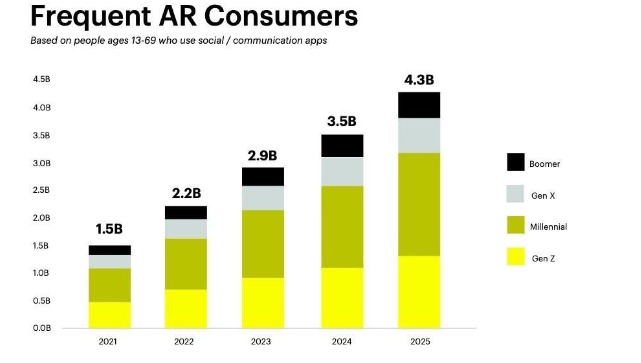
Source: deloitte.com
Conclusion
Augmentation is a promising reality of how developed businesses can keep up with modern trends. It encourages professionalism in competitive food and beverage brands all the while enhancing the demands of consumer needs. Kivisense has taken matters into its own hands and provided almost one billion users with a try-on experience converting viewers into buyers. This initiative is hands down the most liked venture in China and the only one selected by Meta amongst the top five businesses around the world. From fashion try-ons to jewelry and even watches is unbeatable.

